




话题: 寻找“饭友”APP
体裁: 记叙文
难度: ★★★★
建议用时: 12分钟
实际用时:___
正确率:___ /15
Sit With Us
You’re at your new school. It’s lunch time, but you don’t have anyone to sit with. You want to join someone at their table, 1 you’re not sure if they’re friendly. What do you do? Natalie’s 2 of solving the problem was to create an app. She knows what it feels like to be alone at a new school. She found it difficult to make new friends and had to 3 a new table at lunch every day. If she sat 4 , she felt lonely. But if she asked to join someone and was 5 , she felt embarrassed. She created a lunch-planning app to help students like 6 find people to have lunch with.
The app—called Sit With Us—is 7 . If a student is having lunch in the afternoon, he or she can create an invitation. Other students can open the app and 8 that invitation. They can then use the app to decide when and where to 9 . This allows students to make 10 online instead of face-to-face. This is the reason why it works so 11 : it lowers the risk of being refused, and the embarrassment that goes along with it.
Natalie is 12 to see that people are replying to her app actively—especially those who suffer from bullying ( 遭受欺凌 ). Soon after she made her app available to the public, she won a prize for it. She 13 appeared in many news stories.
Natalie was even asked to speak at a university. In her 14 , Natalie wanted people to know that you don’t have to do something 15 to change lives. Sometimes, a simple thing—like having a friend to enjoy lunch with—can make all the difference.
1. A. so B. or C. for D. but
2. A. habit B. course C. method D. question
3. A. search for B. fix up C. give out D. get away from
4. A. on time B. in a hurry C. by herself D. in public
5. A. called B. refused C. discussed D. believed
6. A. us B. it C. her D. them
7. A. cheap B. simple C. private D. noisy
8. A. miss B. make C. send D. accept
9. A. stop B. study C. meet D. exercise
10. A. plans B. trouble C. reports D. dinner
11. A. late B. well C. hard D. loudly
12. A. upset B. sorry C. happy D. angry
13. A. also B. just C. still D. seldom
14. A. book B. talk C. school D. picture
15. A. big B. new C. similar D. enjoyable
话题: 农业博物馆广告
体裁: 应用文
难度: ★★
建议用时: 4分钟
实际用时:___
正确率:___ /3
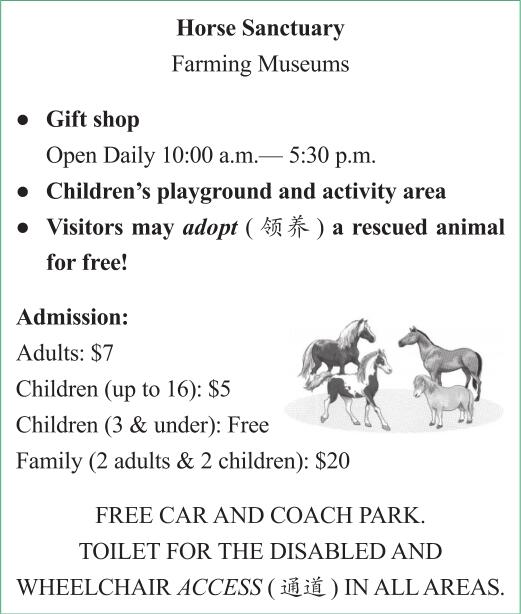
1. When can the visitors buy the gifts?
A. At 9:30 a.m.
B. At 11:00 a.m.
C. At 6:00 p.m.
D. At 10:00 p.m.
2. How much is a ticket for a 15-year-old boy?
A. $5.
B. $7.
C. $12.
D. $20.
3. What do we know about the museum?
A. It doesn’t provide a free parking lot.
B. The animals there can’t be adopted.
C. It offers the disabled special service.
D. Children under 3 are not welcome there.
话题: 海水变咸
体裁: 记叙文
难度: ★★★★
建议用时: 6分钟
实际用时:___
正确率:___ /5
Why is the sea salt? Long before we discovered scientific ways of thinking about it, we explained it in a story. Even though the answer isn’t scientific, it holds some other truth in it—especially about the human heart.
Long ago, a poor old couple lived on the coast. One day, an old storyteller came to their village. The old couple gave him a meal. In return, be gave them a coffee mill ( 磨粉机 ) and said, “Say ‘Mill, please grind ( 磨粉 )’, and it’ll make whatever you want, to stop it, say ‘Mill, please cease ( 停止 ) grinding’.”
Soon the old couple had a much better life. They’d been happy people, and they didn’t need much more. But the young couple next door were never satisfied. When they saw the old couple wearing good clothes and buying good food, they burnt with envy ( 羡慕 ). So one day, the young husband went to the old couple’s house secretly and heard, “Mill, please grind hot chocolate!” He was surprised to see it coming out.
Then the young couple stole the mill from the old couple. With it, they rode a horse and set off down the coast, where no one would know them. Along the way, the husband showed proudly and asked, “What do you want it to make?” “Oh, I don’t know. Why not salt?” the wife said. “Mill, please grind salt!” he said. “It works!” the wife shouted. But then they noticed the salt went everywhere. “Make it stop.” the wife said. But the husband didn’t know how, “Mill, please stop grinding! Please, no more!” His words didn’t work. The mill kept grinding. Finally, the young husband threw the mill into the sea as far as he could.
And there it’s been, for hundreds of years, endlessly grinding salt. That’s why the sea is salt.
1. The passage is probably a(n) ______.
A. folk story
B. instruction
C. science fiction
D. science report
2. Put the things happened to the mill in correct order.
a. It began to produce salt.
b. The young husband threw it.
c. The young couple stole it.
d. The old couple got it
A. b-d-a-c
B. b-a-d-c
C. d-a-c-b
D. d-c-a-b
3. What does the underlined word “it” in Paragraph 4 refer to?
A. The coffee.
B. The horse.
C. The mill.
D. The chocolate.
4. How did the young husband’s feelings change?
A. sorry—sad—excited
B. thirsty—excited—afraid
C. happy—nervous—proud
D. surprised—thankful—happy
5. What does the word “truth” in Paragraph 1 imply ( 暗指 )?
A. Being patient.
B. Working properly.
C. Being satisfied.
D. Listening carefully.
话题: 印尼节日庆典
体裁: 说明文
难度: ★★★★
建议用时: 6分钟
实际用时:___
正确率:___ /5
Indonesians love to celebrate. They believe that celebrating and eating together brings good luck. Let’s party Indonesia-style.
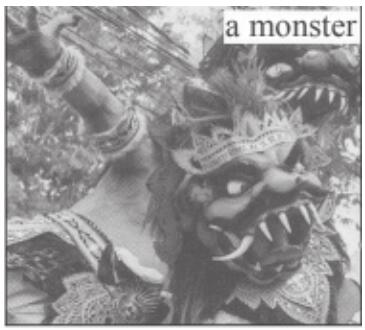
Would you be surprised to find a New Year’s Day in March? Indonesians on the island of Bali are getting ready to ring in Nyepi, their New Year. It falls in March or April on the night of the new moon and is a symbol of a fresh start for the people and the island of Bali. On the eve of Nyepi, families and friends get together in the market. They carry a huge monster which is made of wood and other materials around the village three times. After that, people set it on fire, hoping to drive out evil ( 邪 恶 的 ) spirits.
After Nyepi, a Turun Tanah ceremony begins in honor of a child’s first steps. At the Turun Tanah, parents invite friends and family to a party to introduce the baby. They put different objects such as a bracelet ( 手镯 ), pen, mirror or toy computer around their baby. If the baby picks up a pen, he or she may be a writer. A child who picks up gold bracelet may be rich.
While Turun Tanah celebrates the future of a family, Galungan celebrates its past. Ancestors who have died return ‘home’ during this ten-day celebration. And living relatives do their best to make them happy. Tall bamboo poles line the street. People attend the ceremonies and visit their family and village temples. Actors and dancers give performances that tell stories of good fighting against evil.
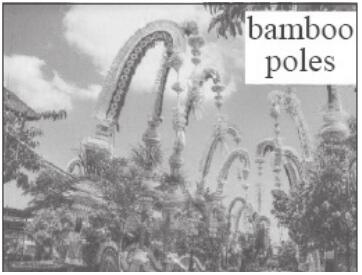
A year of festivals has come to an end. Don’t worry: next year, Indonesia will be buzzing ( 发出嗡嗡声 ) again with celebrations, so welcome to the party!
1. What’s the theme ( 主题 ) of the passage?
A. Celebrations.
B. Feelings.
C. Family.
D. Health.
2. What do people do during Galungan? Check and choose the right answer.
① Watch performances.
② Discuss new babies’ future.
③ Visit their family and village temples.
④ Put the bamboo poles along the street.
⑤ Carry a huge monster around the village.
A. ①②⑤
B. ①③④
C. ②③④
D. ③④⑤
3. Which of the following is TRUE according to the passage?
A. The baby who picks up a pen may be a writer.
B. Nyepi usually comes after Turun Tanah in Bali.
C. New Year’s Day in Indonesia begins in February.
D. People fire bamboo poles to drive away the monster.
4. Which of the following best shows the structure of the passage?
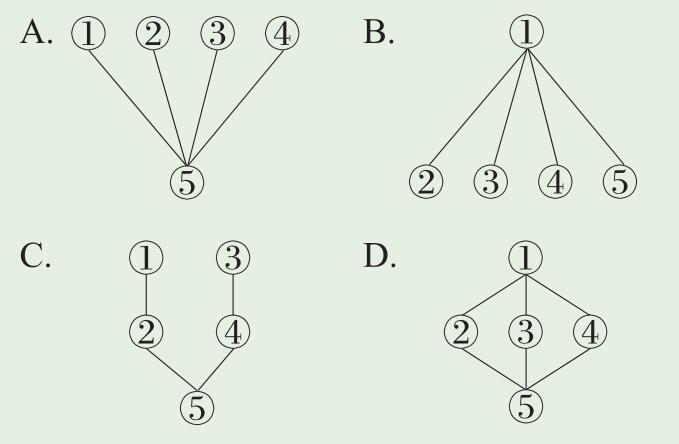
5. What is the writer’s purpose according to the passage?
A. To welcome us to the festivals.
B. To show us how to treat the ancestors.
C. To tell us how to hold the party.
D. To teach us bow to fight against the evil.
话题: 技术更新
体裁: 说明文
难度: ★★★★
建议用时: 8分钟
实际用时:___
正确率:___ /5
Improvements in technology often happen overnight. Some gadgets get smaller and faster. Others are replaced ( 代替 ) by newer things like smartphones. They can do hundreds of things. Here are some old gadgets that people used to use.
① _________
Do you have a landline at home? These are phones that people plug ( 插 入 ) into their living room walls. Mobile phones didn’t use to be so common at that time, so most families had a landline. But landlines only worked at home. What did people do when they were outside and needed to call someone? They looked for a pay phone! Then, most people had their own mobile phones and many homes no longer had landlines.
② _________
People today store plenty of information online, or on SD cards. But in the 1980s and 1990s, people used to use floppy disks. The first floppy disks were large, expensive, and not very useful—each disk could store just 175 KB of information! Later, floppy disks got smaller and better. But even the best ones could only hold 1.44 MB. You would need three or four disks just for one song, and about 22,000 disks to match the storage ( 储存空间 ) available on a 32 GB phone!
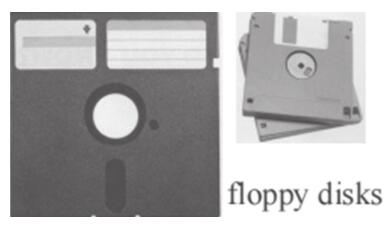
③ _________
It’s easy to take photos today. People often have thousands just on their phones! But photos used to be expensive, and people took fewer of them. To take a photo, you had to buy a roll of film. This allowed you to take about 30 photos. After finishing the roll, you left it at a shop. The shop developed the photos to make them be seen, which you could collect after a few days.
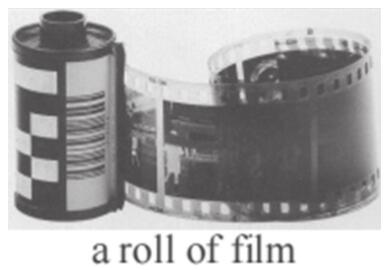
Technology changes all the time, and the gadgets we use today will one day be old. What do you think will be next to disappear?
1. What does the underlined word “gadgets” mean in Paragraph 1?
A. Toys.
B. Tools.
C. Games.
D. Phones.
2. Match the title with each paragraph.
a. Goodbye Disks b. Music to My Ears
c. Picture This d. Call Me
e. Film Development
A. ①-d, ②-b, ③-e
B. ①-d, ②-a, ③-c
C. ①-c, ②-a, ③-b
D. ①-c, ②-b, ③-e
3. What were the first floppy disks like?
A. They could store much.
B. They were very useful.
C. They cost a lot of money.
D. They were easy to carry.
4. What can we get from the passage?
A. It was convenient to take photos with film.
B. People outside used landlines to call some- one.
C. Improvements in technology change people’s life.
D. For a time, many people had pay phones at home.
5. What would be the best title for the passage?
A. The Changing Phones
B. The Products of Tomorrow
C. Old Things We Use Today
D. The Things We Used to Use
话题: 丝绸今昔
体裁: 说明文
难度: ★★★
建议用时: 8分钟
实际用时:___
正确率:___ /5
请先阅读下面短文,掌握其大意,然后根据短文内容从下面方框内的七个选项中选择五个还原到文中,使短文意思通顺、结构完整,并在答题卡上将其序号涂黑。一空一句。
Silk, the word itself is beautiful. The story of silk started in China over 4,000 years ago. It says a silkworm’s cocoon ( 蚕茧 ) fell into a woman’s teacup. It then opened into a single, unbroken thread ( 线 ). 1 The Chinese learned they could use the cocoons to make cloth that was both beautiful to look at and soft to touch.
2 In other countries, silk was valuable and not often seen. Often it was worth more than gold. It’s said that the secret finally got out when a princess left China to go to India. In her hair, she secretly carried many silkworms.
By the year 1 A.D., silk was sold as far west as Rome, and all long the Silk Road. 3 Centuries later, in 1522, the Spanish brought silkworms to Mexico.
Nowadays people around the world still make many beautiful things from silk. Silk isn’t only beautiful. It seems that it’s easy to break. 4 For example, it has been used to make bicycle tires ( 轮胎 ). And some doctors even use silk threads in the hospital. 5 This makes it great for clothes like winter jackets, pants, and shoes.
All of this from a little insect—the silkworm. That is the miracle ( 神奇 ) of silk.
A. Actually it’s very strong.
B. Silk is also light and warm.
C. This was an important discovery.
D. The woman became famous and popular.
E. A princess started the silk trade between China and India.
F. Making silk was a protected secret in China for many years.
G. Around the year 300, silk also traveled from China to Japan.
词汇点拨
完形填空
friendly adj. 友好的
lonely adj. 孤独的
embarrassed adj. 尴尬的;窘迫的
invitation n. 邀请;请帖
face-to-face adv. 面对面
available adj. 可用的,可使用的
make the difference 有影响,很重要;产生差别
阅读理解A
playground adj. 游乐场
rescue vt. 拯救,营救
admission n. 进入;承认;入场
adult n. 成人,成年人
free car and coach park 免费停轿车及长途客车
disabled adj. 残疾的
wheelchair n. 轮椅
阅读理解B
scientific adj. 科学的
coast n. 海岸线
storyteller n. 讲故事的人
in return 作为回报
satisfy v. 满足
burn with 充满强烈的情感
endlessly adv. 无休止地
阅读理解C
in honor of 纪念,向……致敬
symbol n. 象征
monster n. 怪物
set…on fire 将……点燃
ancestor n. 祖先
relative n. 亲属,亲戚
ceremony n. 典礼
temple n. 庙;寺庙
阅读理解D
overnight adv. 一夜之间
gadget n. 小玩意;小配件
landline n. 固定电话
floppy disk 软盘
a roll of 一卷
develop the photo 冲洗照片
任务型阅读
single adj. 单一的
unbroken adj. 未破损的
难句剖析
完形填空
Natalie is happy to see that people are replying to her app actively—especially those who suffer from bullying.
译文 纳塔利很高兴看到人们对她的应用程序做出积极的反应,尤其是那些遭受欺凌的人。
分析 这个句子是主从复合句。Natalie is happy to see是主句,that引导宾语从句;those短语用作同位语,对people作补充说明,其中those是先行词,who引导定语从句。
阅读理解B
When they saw the old couple wearing good clothes and buying good food, they burnt with envy.
译文 当看到这对老夫妇穿着好衣服,买着好食物时,他们妒火中烧。
分析 这个句子是主从复合句。they burnt with envy是主句,when引导时间状语从句,其中see sb. doing sth.是固定搭配,doing短语用作宾语补足语。
阅读理解C
They carry a huge monster which is made of wood and other materials around the village three times.
译文 他们带着一个由木头和其他材料制成的巨大怪物在村子里绕三圈。
分析 这个句子是主从复合句。They carry a huge monster是主句,其中monster是先行词,which引导定语从句。be made of意为“由……制成”。
阅读理解D
The shop developed the photos to make them be seen, which you could collect after a few days.
译文 商店将照片冲洗出来,让人可以看到它们,你可以在几天后收集这些照片。
分析 这个句子是主从复合句。The shop developed the photos to make them be seen是主句,which引导非限定性定语从句,修饰先行词photos。
任务型阅读
The Chinese learned they could use the cocoons to make cloth that was both beautiful to look at and soft to touch.
译文 中国人了解到,他们可以用蚕茧制作出既美观又触感柔软的布料。
分析 这个句子是主从复合句。The Chinese learned是主句,其后为宾语从句,其中cloth是先行词,that引导定语从句。